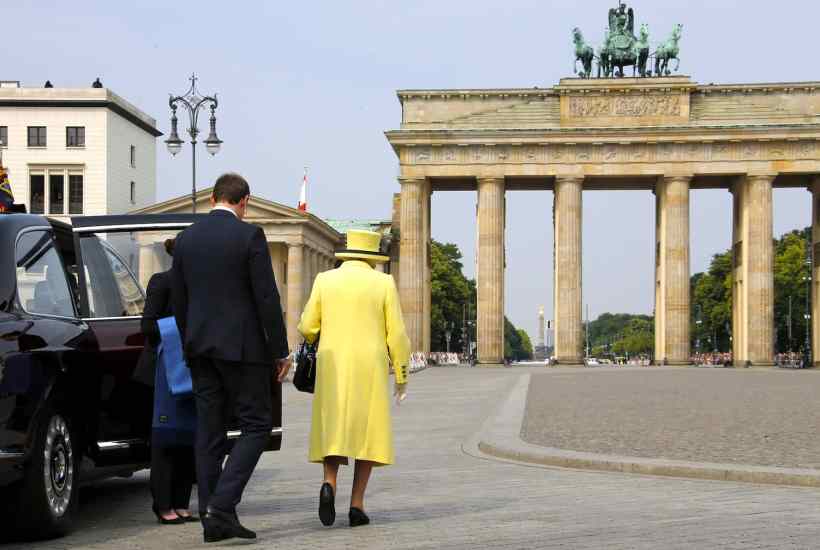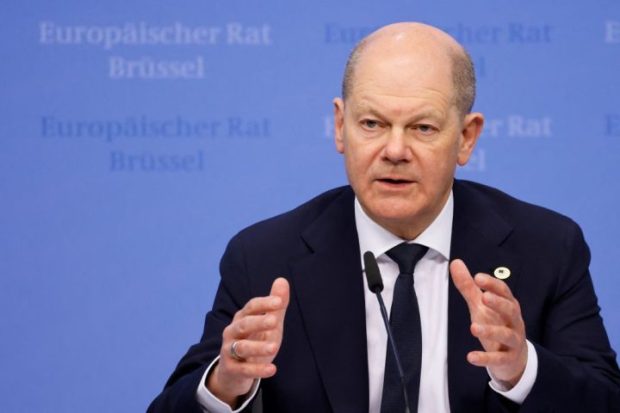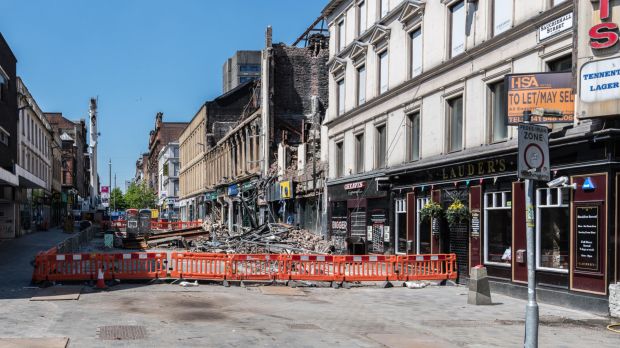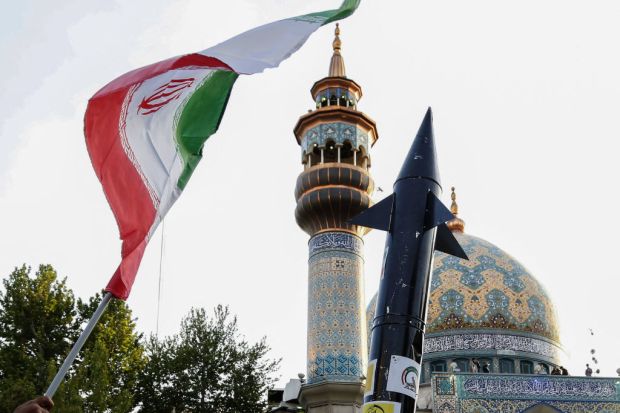The Brandenburg Gate has often reflected the state of the German nation. Throughout the centuries, Berlin’s iconic landmark has been a symbol of victory, defeat, unity, division and restoration. It has even reflected Germany’s energy crisis, no longer lit in order to save electricity. But on Friday night it shone brightly once more: in red, white and blue as Germany mourns the death of Queen Elizabeth II.
This is much more than a gesture of condolence. ‘Expressing our sympathy and our mourning by lighting the symbol of our city and our country in the colours of the Union Jack to honour Queen Elizabeth II fully represents the sentiments of people in Berlin,’ said mayor Franziska Giffey. ‘It was the power of her great personality that has always fascinated us Berliners.’
The Queen visited the German capital seven times, forming a strong bond with the city and its people over the decades. On her last return in June 2015, she and Prince Philip were driven through the Brandenburg Gate in their limousine. But when she first came in 1965, this was impossible. The Berlin Wall had been built four years earlier and the famous landmark stood right behind it, in the inaccessible border zone between East and West Berlin.
But even at the height of the Cold War that tore the country and its capital apart, the Queen still managed to give hope and inspiration to all Germans – East and West of the Iron Curtain. Driving through West Berlin, the royal couple smiled at cheering onlookers as the open-topped car took them nearly all the way up to the wall by the Brandenburg Gate where they waved across. Many East Germans like Gisela Tatsch, then 15 years old, followed the visit on TV. ‘I would have loved to walk up to her and say: “Take me with you, as an au pair,”’ she later remembered, ‘that was of course impossible, but I wanted to see her at least.’
Berlin has not forgotten the Queen’s steadfast support in times of tumult. On Friday, the capital’s flags were lowered to half-mast and the Union Flag was displayed in front of the famous Red City Hall. The Queen ‘was already a legend during her lifetime,’ noted mayor Giffey. She will be remembered as one for decades to come by many fellow Berliners.
The rest of the country too was shocked by the Queen’s death. As the news of her deteriorating health first broke on Thursday, my phone rang almost immediately. It was my grandmother calling from her home in Thuringia in central Germany. She had heard the news on the radio and was deeply upset by it. A decade younger than the Queen, she too had experienced the horrors of the second world war, but also the guilt and shame that followed for Germans afterwards. Like many Germans of her generation, my grandmother remembers how ‘the Queen was ready to extend the hand of friendship to us again at a time when not everyone was ready to do so yet.’
In a similar vein, the German foreign minister Annalena Baerbock tweeted, ‘Germany will forever be grateful to her for extending her hand to us in reconciliation after the terror of the second world war.’ The Queen was the last surviving head of state to have served in this most brutal of human conflicts and yet found it within herself to visit West Germany in 1965 and promote its restoration of ties with Britain. During her 11-day stay, she travelled 3,000 kilometres, visited eight of its ten states and was cheered by adoring crowds wherever she went.
But this was not an easy visit to sell at home. No British head of state had set foot on German soil since before the first world war. In 1917, the royal family replaced their historic name of ‘Saxe-Coburg-Gotha’ with ‘Windsor’ due to anti-German sentiment. The second world war, with its bombing raids, death toll and economic devastation, plunged British-German relations to new depths. But the royals were keen to move things forward, visiting the country’s re-emerging factories and cities only a generation after the end of the war.
The Queen also did not shy away from making difficult trips to places that had seen large-scale devastation through RAF bombing campaigns. The industrial city of Düsseldorf, for instance, had been targeted by up to 700 bombers a night. By 1945, 90 per cent of its buildings had been damaged, half of them completely destroyed, and over 5,000 civilians lay dead. Yet when the Queen visited 20 years later, children were released from school early so that they could join the crowds of half a million people that had lined the streets to see the 39-year-old Queen make her way from the station to the historic town centre.
An even more emotive visit was to follow in 1992 to the former East German city of Dresden. The Frauenkirche, the city’s iconic church, had been destroyed by bombing during the second world war and still lay in ruins 47 years later. Ignoring a number of people jeering and whistling, the Queen stoically took in the site and concentrated on the quiet majority of Dresdeners who had come to thank her for attending a reconciliation service nearby. The following year, the Dresden Trust was set up in Britain, collecting donations of over £1 million, including contributions from Her Majesty herself, to rebuild the famous church. Dresden and its partner city Coventry have been powerful symbols of post-war reconciliation – a process that the Queen and her family have lent their invaluable support.
The Queen accompanied Germany’s difficult post-war path with dignity, patience and generosity. And for that ‘Germany looks to the Queen in gratitude,’ said Chancellor Olaf Scholz in a televised speech on Friday. He spoke on behalf of his country when he said that ‘Germany too mourns the death of Queen Elizabeth II.’
Got something to add? Join the discussion and comment below.
Get 10 issues for just $10
Subscribe to The Spectator Australia today for the next 10 magazine issues, plus full online access, for just $10.



















Comments
Don't miss out
Join the conversation with other Spectator Australia readers. Subscribe to leave a comment.
SUBSCRIBEAlready a subscriber? Log in